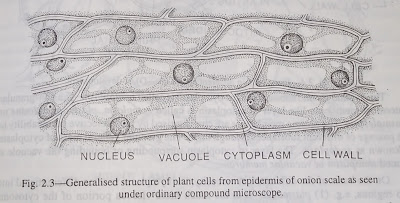Functions of cell membrane : (a) The proteins and enzymes present in the cell membrane helps in the transport of certain substances like sugar, sodium and other ions etc. across the cell membrane. (b) Cell membrane protects the internal structures of the cell and different organelles of the cytoplasm. (c) It maintains the shape of the cell. (d) It acts as a selective permeable membrane because it allows to pass certain substances while others are not, hence it helps in the transport of selective materials from and to the cells. (e) The membranes on the cytoplasmic organelles and nucleus most probably formed from the plasma membrane. (f) Other important functions of cell membrane of the cells are endocytosis and exocytosis . Endocytosis is the process by which materials are transported into the cells by the formation of vesicles. It includes two processes-phagocytosis (cell eating) and pinocytosis (cell drinking). The reverse process of endocytosis is exocytosis. During this p
- Get link
- Other Apps

Comments
Post a Comment